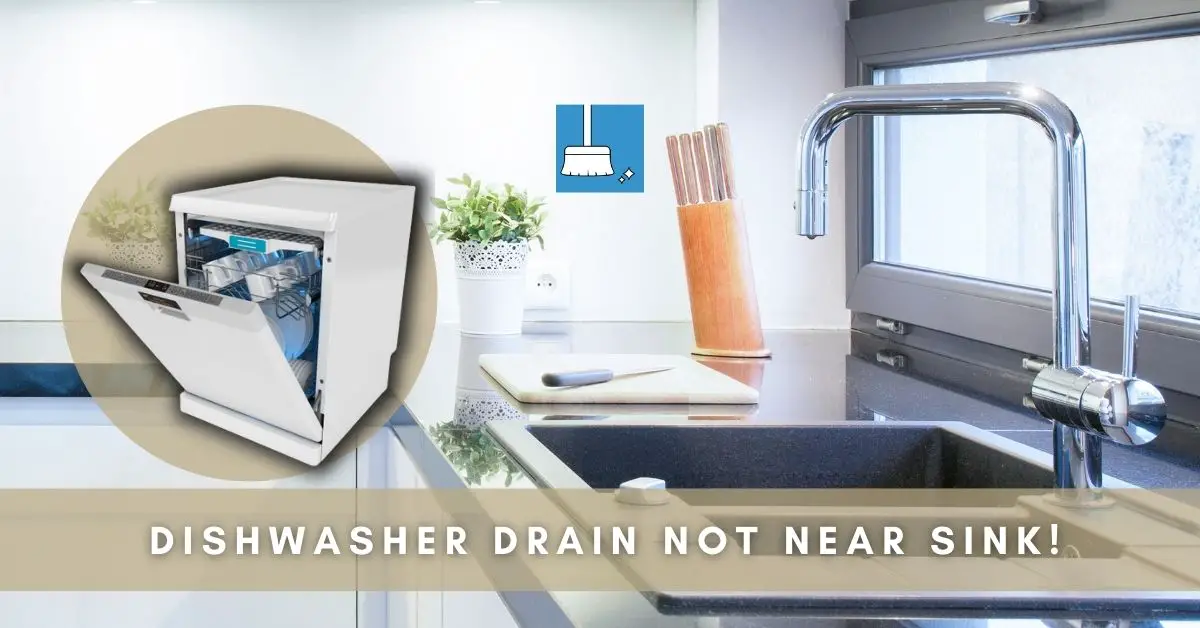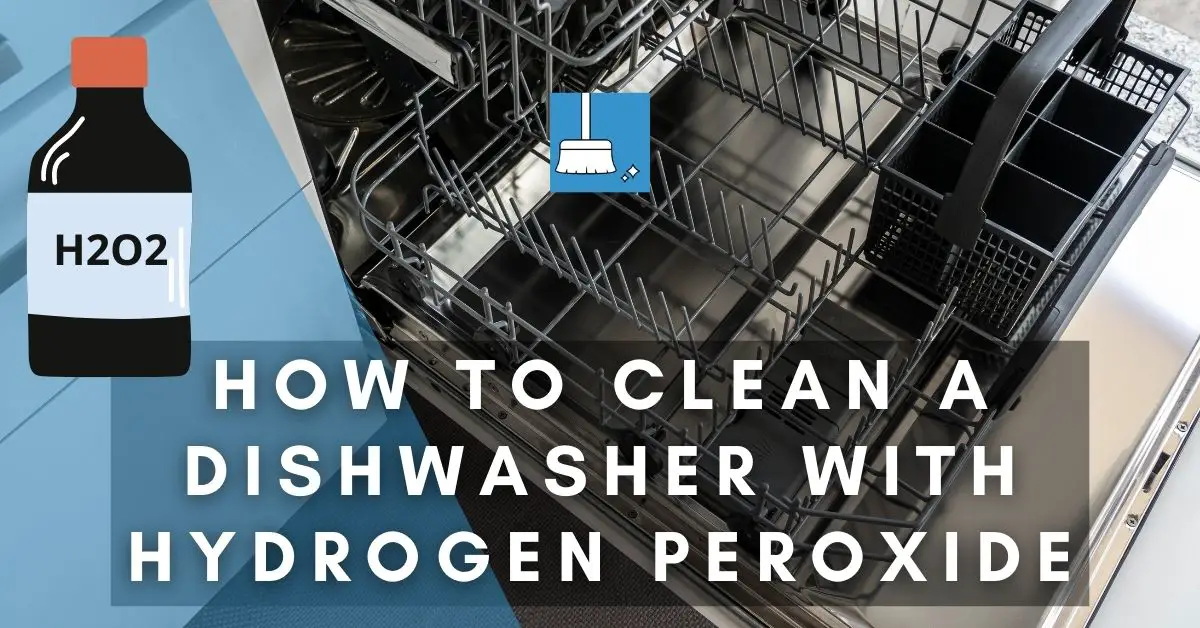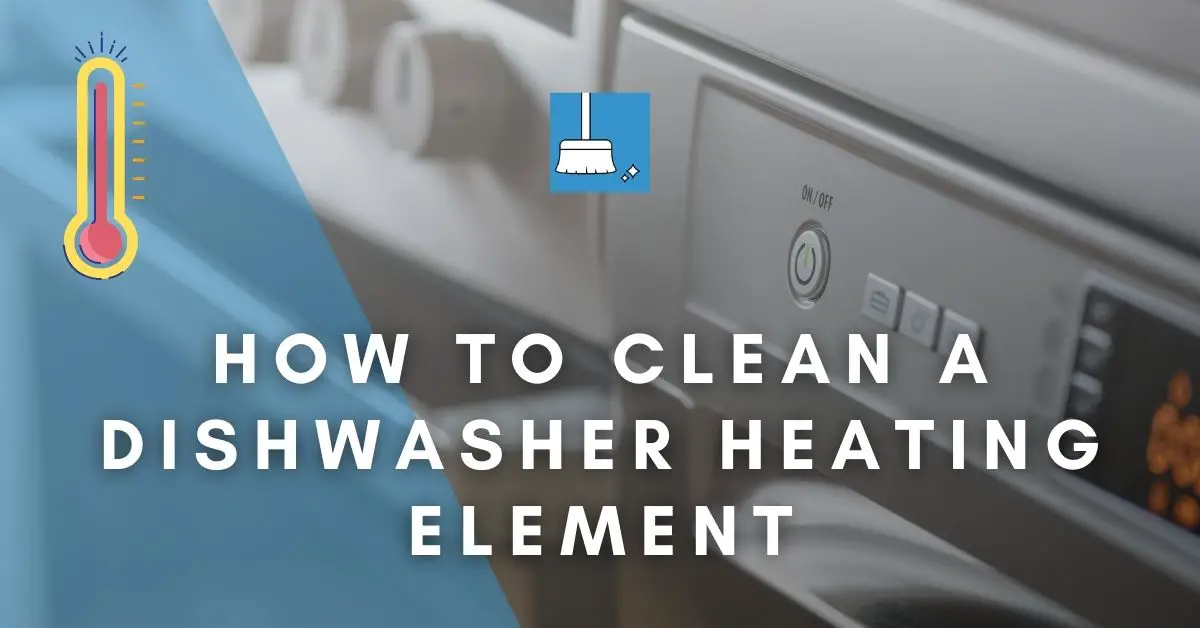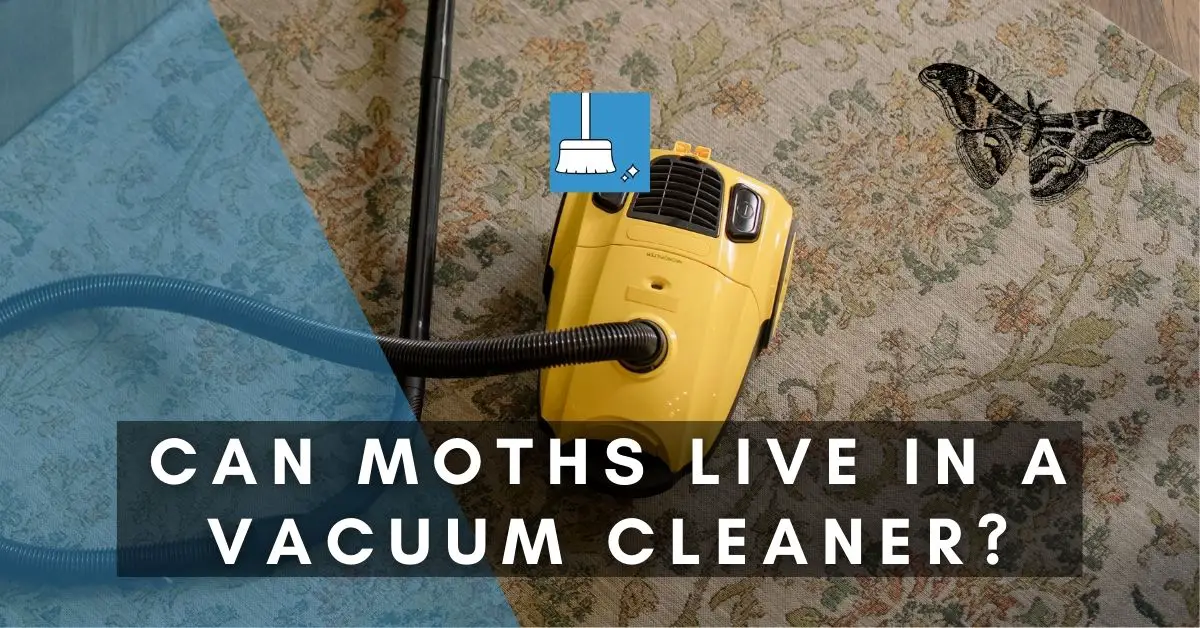Most people install their dishwasher in the cabinet space right beside their sink. However, you might have to install your dishwasher a few feet away from the sink due to a different kitchen design or some other reason.
Usually, you would connect the dishwasher drain hose to the central drainage system under the sink. You would have a problem doing this when your dishwasher is not beside the sink.
This article will explain what to do (step by step) to set up your dishwasher drain when it is not near the sink.
Dishwasher Drain Not Near Sink (What to do?)
How to Install a Dishwasher Drain Not Near the Sink (2 methods)
Method 1: Extend the drain hose to get to the sink
This method is pretty straightforward. You are still going to make the connection under the sink. The only difference is that you will have to extend your dishwasher drain hose with a hose extension.
You can use a high loop or air gap installation. You can also attach your drain pipe directly to the drainage or the garbage disposal.
YOU’LL NEED
1- Dishwasher drain hose
2- Extention hose
3- ⅞ inch hose (for airgap installation)
4- Y connector (optional)
5- Flathead screwdriver
6- Barb fitting(s) (Make sure you get one that corresponds with the inner diameter of your pipe.)
7- High loop bracket (optional)
8- Air gap (optional)
9- Adapter fitting (optional)
10- Hose clamps
11- Power drill
STEPS
STEP 1 – Connect your drain hose to the dishwasher. Use a hose clamp to attach it to the dishwasher’s drain port, and tighten the clamp with your screwdriver.
STEP 2 – Take a barb connector and attach the other end of your dishwasher drain to it. Secure it with a hose clamp.
STEP 3 – Attach one end of the extension hose to the barb connector.
STEP 4 – Drill appropriately sized holes through the bottom side of your cabinets, creating a path to the underneath of your sink.
STEP 5 – You may decide to run the pipe underneath your flooring, but that may not be code compliant depending on where you live.
STEP 6 – Pass the hose through the path until you get under your sink. Extend the hose to the appropriate length.
STEP 7 – Underneath your sink, you can do either of two things. The first is to make a high loop and secure the hose to the top side of your cabinet with a bracket. The second is to connect your hose to an airgap mounted on your sink.
STEP 8 – With the air gap method, you need to extend the drainpipe so that it is long enough to connect to the smaller tailpiece of the airgap. Then secure it with a hose clamp.
STEP 9 – After this, you need to attach one end of your ⅞ inch tubing to the airgap. Then attach the other part to either a y – connector nipple on your main drain pipe connecting to the sink or the inlet nipple on your garbage disposal.
STEP 10 – If you are not using the airgap method, attach it directly to your garbage disposal or drainage.
STEP 11 – For the drainage connection, if your main drain pipe does not have a y-connector above the p-trap, you will have to fit one there.
STEP 12 – You must remove the disc in the inlet nipple for the garbage disposal connection. It will only be there if you have never connected a dishwasher to your garbage disposal. You can remove it by knocking it out with a hammer and screwdriver and fishing it out.
STEP 13 – You may need an adapter fitting to connect the hose to your garbage disposal.
Method 2: Connect to Main Drain Using a Stand Pipe
For this method, it does not matter where your sink is. You just need to find a suitable location in your kitchen where you can connect a standpipe to the drainpipe in the main drainage of your house. This is the drain method that most washing machines use.
You can modify these steps as necessary, depending on the plumbing structure of your house.
YOU’LL NEED
1- Drainpipe
2- Hose clamps
3- Screwdriver
4- Standpipe
5- A short piece of piping/ flexible hose
6- Wastewater pipe holder
7- Y or T connector fitting
8- PVC glue (for PVC pipe)
9- Any suitable adhesive for other pipe material
10- Sawzall
11- Drain trap
STEPS
STEP 1- In the location of your kitchen where you are installing the dishwasher, you need to drill an appropriately sized hole into the floor to connect to your main drain pipe.
STEP 2- Intercept the main drain pipe at the most suitable position underneath the dishwasher. Cut through it with the Sawzall and use a y or t fitting at that point.
STEP 3- After this, connect your short pipe or flexible hose through the drilled hole in your kitchen floor to the third end of the t or y pointing upwards.
STEP 4- Connect the other end of this pipe or hose to the drain trap. It is S-shaped. It has two ends, one of which you connect your line from the main drainage to, and the other to which you connect your standpipe. Let your standpipe be at least 30 cm high, but not higher than the dishwasher height.
STEP 5- Connect your dishwasher drain hose to the drain outlet and secure it with hose clamps and a screwdriver.
STEP 6- Use the pipe holder to hold your drain hose securely and put it into the standpipe.
STEP 7- Fill your dishwasher with water and drain it to test for leaks.
Things to Note During Dishwasher Drain Setup
1- A frequent error when installing the drainpipe is a missing high loop. If you are not using an air gap, you must install a high loop before connecting your dishwasher to the drain trap.
This high loop prevents the backflow of dirty water into the dishwasher. If you’re using a standpipe, the drain pipe’s curvature from the bottom of the dishwasher to inside the standpipe acts as your high loop.
2- Your connection to the drain system via the y fitting must also occur above the trap, i.e., before wastewater gets to it. Not below.
3- Confirm that your chosen installation method adheres to your state code.
4- Also, generally take precautions like ensuring your dishwasher is not plugged in. Wear appropriate gear if needed, like gloves to protect yourself from dust or injury. Lastly, keep a rag handy in case of any dripping or leakage.
Should You Install a Dishwasher Far From the Sink
If you just purchased a dishwasher, you might have been disturbed to find that it cannot fit beside the sink. Should you install it away from the sink or reconstruct your kitchen so that it can work?
Yes, you can install your dishwasher away from the sink as long as it is still within your kitchen. You can still perfectly set up your dishwasher drain with a good plumber or DIY skills.
Pros of Installing Your Dishwasher Away From the Sink
Although it is not conventional, installing your dishwasher away from the sink has some advantages. Some of them include:
1- Personalization
Putting your dishwasher away from the sink can give you more freedom to customize the layout of your kitchen.
You may have a dream look for your kitchen that cannot work with the dishwasher beside the sink. If this is the case, you don’t have to sacrifice your dream for conventionality.
2- Functionality
Having your dishwasher across or away from your sink might be more manageable.
Suppose your utensil cupboard is across from the sink, for example. In that case, it’ll be easier to put the dishwasher beside it so you can conveniently arrange washed dishes.
3- Mobility
Depending on the positioning of the sink, installing a dishwasher beside it might hinder mobility in the kitchen.
For instance, you might get trapped by a corner sink with an open dishwasher door. If your dishwasher beside the sink would hinder your mobility in the kitchen, it is better to install it away from the sink.
Cons of Installing Your Dishwasher Away From the Sink
On the other hand, having your dishwasher away from your sink has common disadvantages. Some include:
1- Inconvenience
You have to move dirty dishes from your sink to the dishwasher to wash them. Having your dishwasher far from the sink would cause you to carry plates across your kitchen. Having to do this repeatedly to fill the dishwasher with utensils can be pretty stressful.
2- Inefficiency & Mess
It is advisable to rinse your dishes before putting them in the dishwasher. It will preserve your dishwasher life and help it wash better.
If your dishwasher is not near the sink, this means that you would be moving wet utensils across the kitchen. This will result in a pretty messy kitchen.
3- Extra-cost
It might be costly to install the dishwasher away from your sink. You would also have to buy extra hardware. So, if you are hiring a professional, you’d buy the dishwasher and additional hardware and then pay installation costs.
Take Away!
Now you know better than to fret if your dishwasher drain is far from the sink. With proper installation, your dishwasher will do just fine.
If you are not so confident in your DIY skills, it is okay to hire a professional plumber to set it up for you. Either way, a good setup will ensure that you don’t encounter any problems for as long as you use the dishwasher.






Pingback: Dishwasher Drain Directly Into The Waste Line! (Possible?) »